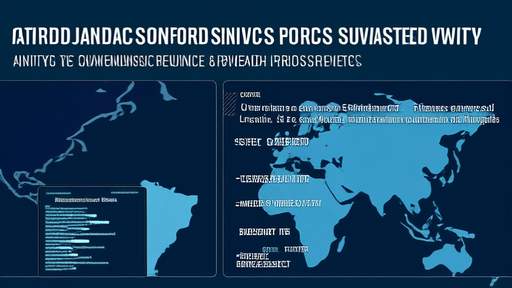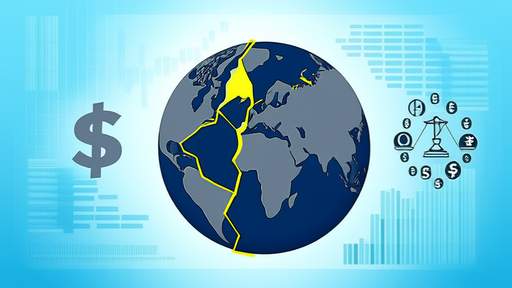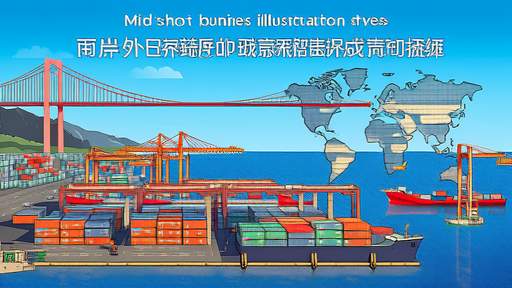The movement of global talent has become a cornerstone of economic growth and innovation in the 21st century. Countries around the world are increasingly competing to attract skilled professionals, entrepreneurs, and researchers through tailored visa policies. These policies not only reflect a nation's economic priorities but also its broader geopolitical strategy. As borders become more porous for the highly skilled, the differences in visa frameworks reveal fascinating insights into how nations position themselves in the global talent race.
For decades, the United States has been the undisputed leader in attracting global talent, largely due to the H-1B visa program. Designed for specialty occupations, the H-1B has fueled Silicon Valley's rise by allowing tech giants to recruit internationally. However, the system's annual cap and lottery-based selection have drawn criticism for being arbitrary and insufficient to meet demand. The recent introduction of the International Entrepreneur Rule, though less publicized, shows America's attempt to court startup founders who might otherwise choose more welcoming destinations.
Across the Atlantic, the United Kingdom's post-Brexit immigration system has undergone significant transformation. The points-based system, modeled partly on Australia's approach, prioritizes qualifications, English proficiency, and job offers above other considerations. The Global Talent Visa stands out as particularly innovative, requiring no job offer for exceptionally talented individuals in fields like technology and academia. What makes the British approach distinct is its tiered system that differentiates between various skill levels and investment thresholds, creating multiple pathways for different categories of migrants.
Germany's Blue Card program demonstrates Europe's most successful attempt at streamlining skilled migration within EU frameworks. With relatively low salary thresholds compared to other Western nations and provisions for permanent residency after 33 months, Germany has positioned itself as particularly attractive to engineers and IT specialists. The recent introduction of the Opportunity Card, a points-based work visa that allows job-seeking in Germany for up to one year, marks a significant departure from traditional employment-tied visas and reflects the country's urgent need for skilled labor across sectors.
Asian economies have developed particularly interesting variations on talent visas. Singapore's Tech.Pass program specifically targets established tech leaders, offering unprecedented flexibility to start companies, invest in local businesses, or lecture at universities. Meanwhile, Japan's Highly Skilled Professional visa employs a points system that rewards advanced degrees, high salaries, and professional achievements with accelerated permanent residency - as quick as one year for the highest scorers. These Asian models reveal how smaller economies are leveraging niche advantages to compete for talent against larger Western nations.
The emerging trend of digital nomad visas represents perhaps the most radical rethinking of traditional migration policies. Countries from Estonia to Barbados have introduced programs allowing remote workers to reside legally while employed by foreign companies. These visas typically require proof of sufficient income and health insurance but impose no local employment requirements. While not strictly "talent" visas in the traditional sense, they acknowledge the growing reality of location-independent skilled professionals and represent a clever strategy to inject foreign spending power into local economies without displacing domestic workers.
Canada's Global Skills Strategy deserves special mention for its remarkable efficiency in processing work permits for highly skilled professionals within two weeks - an unprecedented speed in global immigration systems. Combined with the country's straightforward path to permanent residence and reputation for welcoming immigrants, this administrative efficiency has made Canada particularly attractive to tech workers frustrated by the uncertainty of the U.S. system. The program's success highlights how procedural improvements can be as impactful as substantive policy changes in the competition for talent.
Australia's migration system has long been a pioneer in points-based selection, but its recent adjustments reveal an interesting evolution. The scrapping of the 457 visa program and introduction of more stringent requirements reflects a political balancing act between economic needs and public concerns about immigration. However, the Global Talent Independent program, targeting elite professionals in future-focused industries, shows Australia's continued commitment to attracting world-class talent despite broader immigration restrictions. This dichotomy illustrates how countries are increasingly segmenting their immigration policies to appeal to different talent tiers.
The Gulf nations present a fascinating contrast in talent attraction strategies. While traditionally reliant on temporary guest workers, countries like the UAE have introduced golden visas offering long-term residency to investors, entrepreneurs, and professionals in specific high-demand fields. These policies aim to transition Gulf economies from their historical dependence on transient labor forces toward more stable, high-value expatriate communities. The inclusion of artists, athletes, and scientists in these programs signals an ambition to become comprehensive hubs of talent beyond just business and finance.
Scandinavian countries, while maintaining relatively restrictive overall immigration policies, have created specialized fast-track schemes for certain professionals. Sweden's highly mobile labor market allows employers considerable freedom in recruiting internationally, while Denmark's Positive List system directly ties work permits to occupations facing shortages. These approaches demonstrate how even traditionally homogeneous societies are adapting their systems to address critical skill gaps while maintaining control over broader migration flows.
An often-overlooked aspect of global talent visas is the growing competition for international students as a pipeline for skilled migration. Countries like Canada and Australia grant substantial points for domestic educational credentials in their immigration systems, while the U.S. struggles to retain international graduates due to restrictive work visa policies. The U.K.'s reintroduction of post-study work rights after political pressure from universities shows how higher education policy has become inextricably linked to talent migration strategies.
The proliferation of startup visas represents another significant development in global talent policies. From France's Tech Visa to Chile's Startup Chile program, governments are recognizing that attracting entrepreneurial talent can yield disproportionate economic benefits. These visas typically require less capital than traditional investor visas but demand credible business plans and often participation in local incubators. The success of such programs in creating vibrant startup ecosystems has prompted even traditionally conservative immigration countries to experiment with entrepreneur-specific visas.
As nations refine their talent attraction strategies, several key tensions emerge. The balance between protecting domestic workers and accessing global skills remains politically charged. The trade-offs between highly selective elite programs and broader skilled migration frameworks require careful calibration. Perhaps most importantly, the long-term integration of talent migrants - their path to permanence and participation in society - will determine whether these policies yield sustainable benefits or create transient communities of globally mobile professionals.
The next decade will likely see even more innovation in talent visa policies as countries respond to technological change, demographic shifts, and evolving economic priorities. What began as simple work permit systems have transformed into sophisticated tools of economic policy and international competition. The nations that succeed in this arena will be those that not only offer attractive visa terms but also cultivate ecosystems where global talent can thrive, innovate, and put down roots.

By /Jun 3, 2025

By /Jun 3, 2025

By /Jun 3, 2025

By /Jun 3, 2025

By /Jun 3, 2025

By /Jun 3, 2025

By /Jun 3, 2025

By /Jun 3, 2025

By /Jun 3, 2025

By /Jun 3, 2025

By /Jun 3, 2025

By /Jun 3, 2025

By /Jun 3, 2025

By /Jun 3, 2025

By /Jun 3, 2025

By /Jun 3, 2025

By /Jun 3, 2025

By /Jun 3, 2025

By /Jun 3, 2025

By /Jun 3, 2025